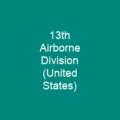Fort Bragg is a military installation of the United States Army in North Carolina. It is one of the largest military installations in the world, with around 57,000 military personnel. It was named for Confederate General Braxton Bragg, who served in the U.S. Army in the Mexican-American War.
About Fort Bragg in brief

The original plan for six brigades was abandoned after World War I ended and once demobilization had started. The aim was for six artillery brigades to be stationed there and USD 6,000,000 was spent on the land and cantonments. In early 1921 two field artillery units, the 13th and 17th Field Artillery Brigades began training at Camp Bragg. The same year, the Long Street Church and six acres of property were acquired for the reservation. The church was listed on the National Register of Historic Places in 1974. It was also a census-designated place in the 2000 census, during which a residential population of 29,183 was identified. By 1940, the population of Fort. Bragg had reached 5,400; however, in the following year, that number ballooned to 67,000. Various units trained at FortBragg during World war II, including the 9th Infantry Division, 2nd Armored Division, 82nd airborne Division, and various field artillery groups, including a 100th field artillery group during the 100th Division during the war. In July 1951, the XVIII. Airborne. Corps was reactivated at Fort Brag, and became the only large unit for some time.
You want to know more about Fort Bragg?
This page is based on the article Fort Bragg published in Wikipedia (as of Dec. 05, 2020) and was automatically summarized using artificial intelligence.






